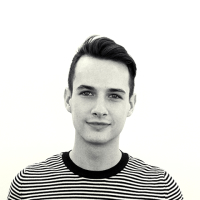Men in sheer tops. Men in short shorts. Men in hoods and cloaks and with handkerchiefs around their neck.
These are the looks that will dominate the streets and store windows early next year. That is, if we are going by Fashion Week predictions.
Over the past four days, designers have gathered in lower Manhattan for the city’s first official Fashion Week dedicated to menswear.
ADVERTISEMENT
GALLERY: Street Style at Men’s Fashion Week (PHOTOS)

The designs, which are typically woven into women’s collections at Mercedes-Benz Fashion Week or showcased at private events, garnered their own spotlight this summer.
Amazon, Cadillac, Dockers, and Dreamworks gave corporate sponsorship to the program, which was founded by the Council of Fashion Designers of America (CFDA).
“[It’s] been a topic of conversation for almost a decade,” Steven Kolb, CEO of the CFDA, told The Daily Beast. “Back in the late 1990s, there was a men’s week that worked for that time. But with the growing market and the influence of technology making fashion more accessible, the time was perfect to create a new men’s fashion week.”
Over 50 menswear designers, ranging from Public School and Billy Reid to Calvin Klein and Ralph Lauren, took their turn dominating the catwalks at Skylight Clarkson Square, a massive warehouse and event space on the West Side Highway.
The vibe was chill. The crowd was tame. And the sea of editors, buyers, bloggers, and fashionistos looked like they had actually slept (even the models did, too).
That’s something you would never see during Mercedes-Benz Fashion Week, where the people are on crash diets, attending parties until 4 a.m., and jumping between shows like they’re on The Amazing Race.
In comparison, New York Fashion Week: Men’s has been considerably tame. Front-row celebrity appearances were extremely rare. Not a single person or look shocked the runway. And mainstream media coverage seemed to be light.
So what’s the point in having a separate week dedicated to the fellas if the hype doesn’t match its feminine counterpart?
“It coincides with the selling period for menswear and the trade shows all happen right after,” Michael Maccari, the creative director of Perry Ellis, told The Daily Beast. “I think it’s a great thing to focus on the commerce of it rather than the fluffy fashion part, which is what it is when [the shows] are too late.”
By the time September’s shows rolled around, designers had already sold their collections. Also, menswear press was often overtaken by the madness of high-profile womenswear.
For New York’s male fashion cognoscenti there was a fashion desert between February’s Fall/Winter shows and “market week” in July, the global fashion trade show which brings together the top menswear brands and prospective retailers looking to stock their stores with the latest trends.
Until this year’s rebirth of “NYFW: Men’s,” European menswear shows filled the gap—in June, London hosts an impressive men’s week while Paris showcases heavy hitters like Raf Simons, Louis Vuitton, Saint Laurent, and Lanvin.
But there was not a comparable showcase for American talent.
“I think it’s really important that all of us American menswear designers participate,” designer Michael Bastian, who has previously shown his full collections in Milan and at the Pitti trade show, told Bloomberg. “I’m an American designer, and I always felt a show somewhere other than New York might look or feel out of context.”
In the same article, which questioned if a “Men’s Week” was really a good idea, an opposite opinion emerged.
Debra Scherer, a former editor for Paris Vogue and Vogue Italia, declared, “another branded fashion week is the last thing we need … It’s too much, and it’s bad for the industry because it dilutes everything. That’s the grumbling I hear from everyone.”
While no one whom I spoke with shared the same sentiment, some did see both positive and negative aspects of separating the men’s from the women’s.
“The CFDA did a fucking excellent job,” Steven Cox, co-founder and designer for Duckie Brown, told The Daily Beast. “And I think its important that men have their own week, but then it’s a bit old fashioned that we are separating men’s at this moment where, even on reality television, gender is so hyped up…and there’s a lot in common with men and women as we all know now.”
Duckie Brown’s designs are often reviewed as “androgynous,” though co-founder and designer Daniel Silver thinks it’s a misnomer and prefers the term “ambiguous.”
“Androgyny to me means without sex,” he told The Daily Beast, “and I think what we do has a lot of sex in it and is very hot. What we do is very ambiguous. It’s for anyone who wants it.” So, not just men.
Duckie Brown’s collection was full of oversized pants tightly cinched at the waist and see-through organza blouses in various patterns and styles. The looks could have been modeled on women just as easily as they could have on men.
When asked if the design duo thought both men and women should share the traditional Fashion Week in September and February, Silver said: “I just think perhaps there are other ways to think about it. It would be interesting to see other ways of slicing the apple.”
But the early presentations made it all about business this week as designers showed their collections and geared up for “market.”
Sure, the mayhem and madness of the 300-plus shows at previous Fashion Weeks is marginally subdued, but the fervor and excitement for those who follow menswear was just as high.
And Kolb assures that the dedicated week is here to stay. “We have a multi-season plan for NYFW: Men’s,” he said. “And we will continue to strengthen what we created with new designers and opportunities.”






